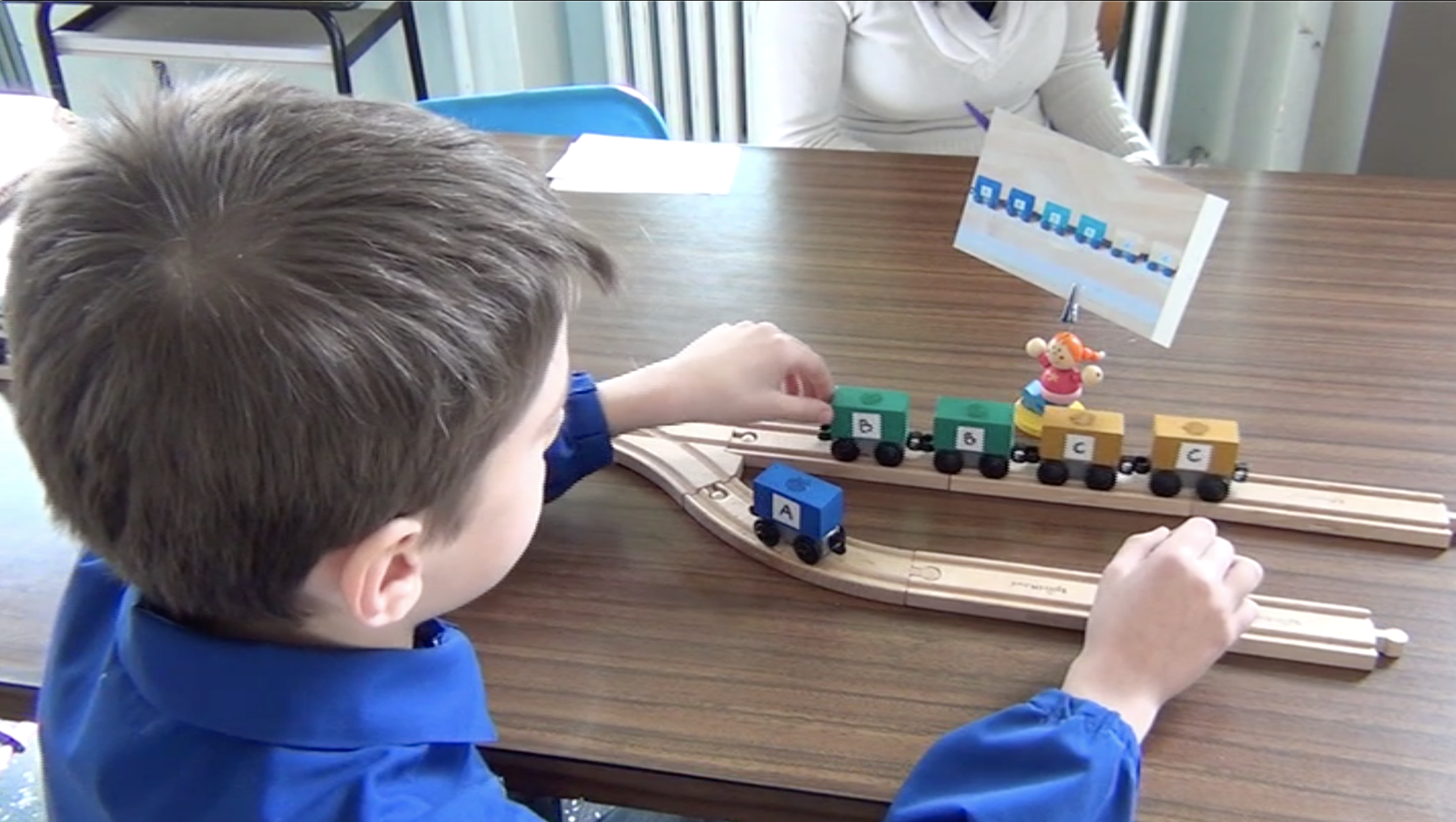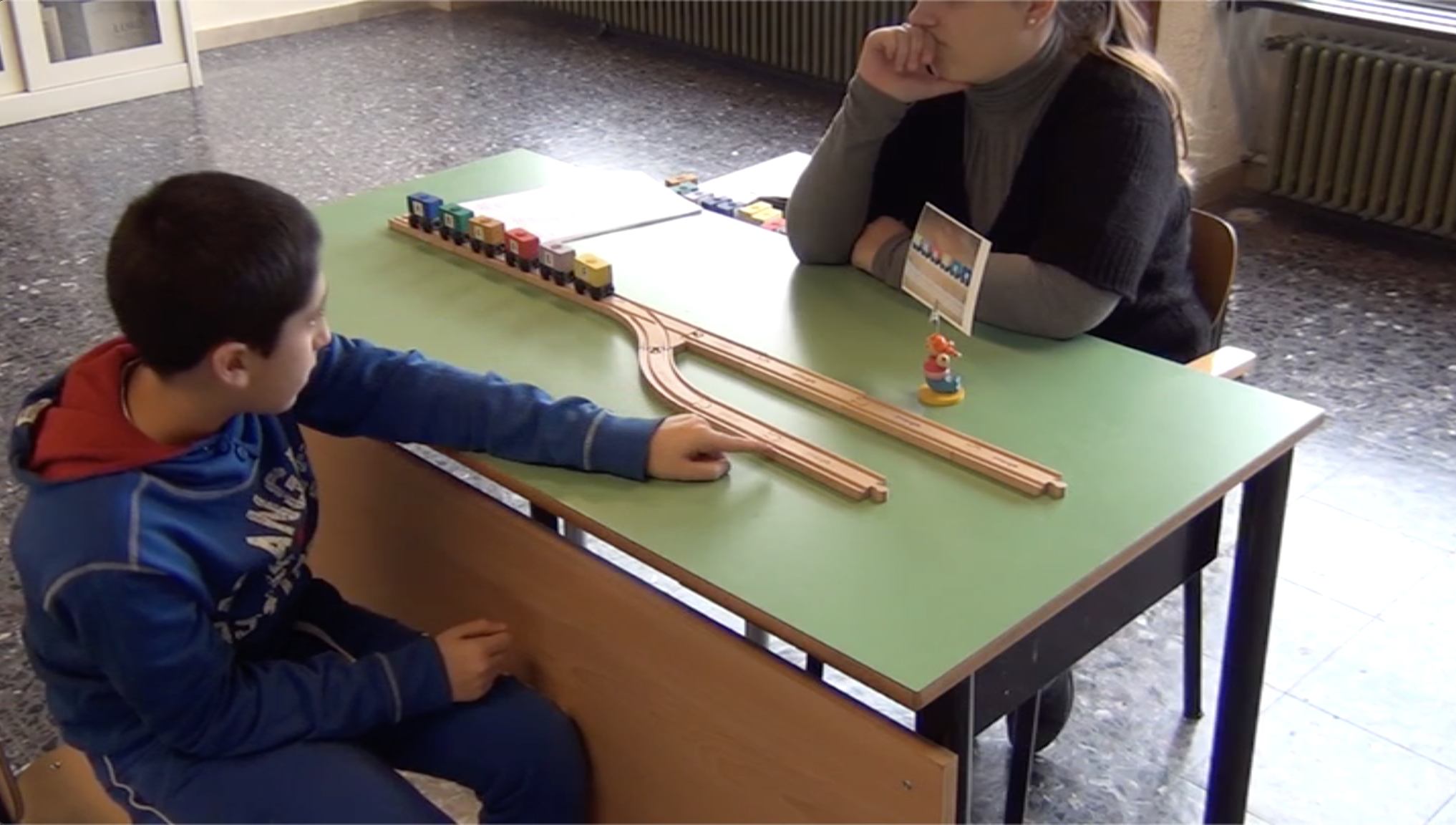Kinematic mental simulations
Mental simulations can be “kinematic” — they can unfold in time and represent a sequence of events in the world, real or imaginary. Recent studies by Bucciarelli, Mackiewicz, Khemlani, and Johnson-Laird reveal how children and adults use kinematic simulations to generate mental “algorithms”, i.e., repeated sets of operations used to accomplish some goal. The researchers presented people with a a simple game-like railway environment in which a set of train cars had to be rearranged into a new order using the railroad tracks in the environment, along with some simple, intuitive rules (such as: cars can’t “jump over” one another).
The task came with a twist: instead of simply figuring out the best way of rearranging the cars, participants in the studies had to creatively generate their solutions without interacting in the environment. The researchers discovered that reasoners have systematic difficulty generating certain kinds of algorithms: algorithms with loops, i.e., “recursive” algorithms. People who took part in the study used different kinds of looping operations: people spontaneously used “while-loops” more than “for-loops” (“for-loops” are loops in which the number of loops needs to be specified ahead of time; “while-loops” don’t have that requirement). Many children solved those problems by creating “proto-loops”, i.e., statements such as, “I’ll move this train here — and then I’ll do it again…and again…and again…”.
The research validates the model theory: without building mental simulations of the kinematic interactions of the train cars, it would have been impossible for reasoners to arrive at correct solutions.
Collaborators
Monica Bucciarelli, Geoff Goodwin, Phil Johnson-Laird, Sangeet Khemlani, Robert Mackiewicz, Marco Ragni
Recent papers
- Bucciarelli, M., Mackiewicz, R., Khemlani, S., & Johnson-Laird, P. N. (2016). Children’s creation of algorithms: simulations and gestures. Journal of Cognitive Psychology, 28, 297-318.
- Bucciarelli, M., Mackiewicz, R., Khemlani, S., & Johnson-Laird, P. N. (2018). Simulation in children’s conscious recursive reasoning. Memory & Cognition, 46, 1302–1314.
- Bucciarelli, M., Mackiewicz, R., Khemlani, S., & Johnson-Laird, P. N. (2022). The causes of difficulty in children’s creation of informal programs. International Journal of Child-Computer Interaction, 31, 100443.
- Johnson-Laird, P.N., Bucciarelli, M., Mackiewicz, R., & Khemlani, S. (2022). Recursion in programs, thought, and language. Psychonomic Bulletin & Review, 29, 430-454.
- Khemlani, S., Goodwin, G.P., & Johnson-Laird, P.N. (2015). Causal relations from kinematic simulations. In R. Dale, C. Jennings, P. Maglio, T. Matlock, D. Noelle, A. Warlaumont, & J. Yoshimi (Eds.), Proceedings of the 37th Annual Conference of the Cognitive Science Society. Austin, TX: Cognitive Science Society.
- Khemlani, S., Mackiewicz, R., Bucciarelli, M., & Johnson-Laird, P. N. (2013). Kinematic mental simulations in abduction and deduction. Proceedings of the National Academy of Sciences, 110,
16766-16771.

